Amy H. Sturgis's Blog, page 7
October 14, 2024
Halloween Countdown 2024, Day 14
Before we leave the subject of Northanger Abbey completely, let’s include one more work that inspired the novel (and left a lasting mark on the Gothic tradition), The Monk (1796) by Matthew Gregory Lewis.
Quote: “Be cautious not to utter a syllable!” whispered the Stranger; “Step not out of the circle, and as you love yourself, dare not to look upon my face!”
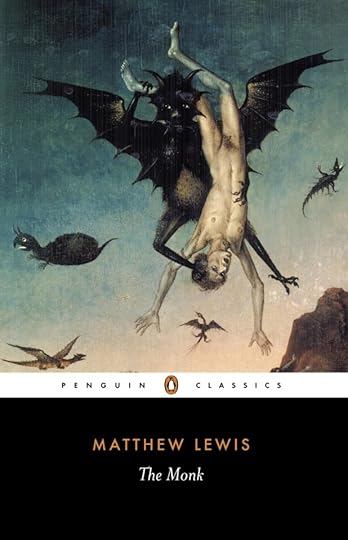 ALT
ALT
October 13, 2024
Halloween Countdown 2024, Day 13
One more of the so-called “horrid novels” referenced in Northanger Abbey is The Orphan of the Rhine (1798) by Eleanor Sleath.
Quote: “Here Silence has fixed her abode, disturbed only at intervals by the howling of the wolf, or the cry of the vulture. In such a situation actions have no witnesses; these woods are no spies.”
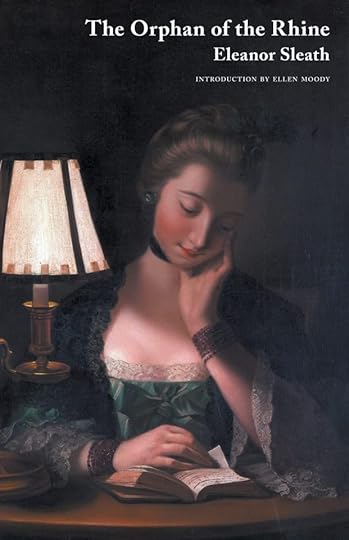 ALT
ALT
October 12, 2024
Halloween Countdown 2024, Day 12
Today’s creepy novel, also mentioned as “horrid” in Northanger Abbey, is The Necromancer; or, The Tale of the Black Forest (1794) written by Carl Friedrich Kahlert (under pseudonym) and translated by Peter Teuthold.
Quote: “…a dreadful chilliness seized us, we felt the grasp of the icy fangs of horror, being in a burying vault surrounded by rotten coffins. Skulls and mouldered bones rattled beneath our feet, the grisly phantom of death stared in our faces from every side, with a grim, ghastly aspect. In the centre of the vault we beheld a black marble coffin, supported by a pedestal of stone, over it was suspended to the ceiling a lamp spreading a dismal, dying glimmering around.”
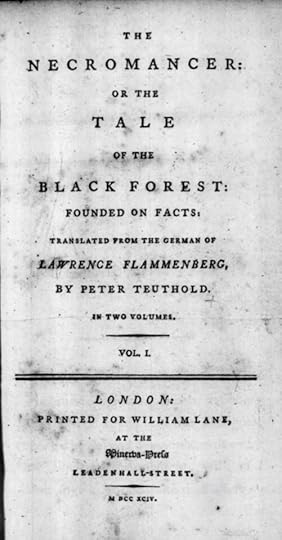 ALT
ALT
October 11, 2024
Halloween Countdown 2024, Day 11
Some of the Gothic works deemed “horrid” by Jane Austen in 1818’s Northanger Abbey (“are you sure they are all horrid?”) are available online, so let’s shift this countdown to those dark and delicious novels. (One is The Children of the Abbey, already covered on Day 7.)
Today’s title is The Castle of Wolfenbach (1793) by Eliza Parsons.
Quote: “My Lord came here once or twice, but the ghosts made such a noise he could not stay. Several gentry have slept here at times, but no body would stay a second night, and so we have all to ourselves by day, and the ghosts, or what they be, have got all the rooms by night and then they be quiet enough.”
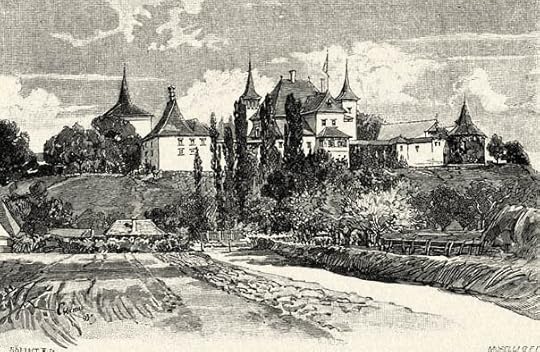 ALT
ALT
October 10, 2024
Halloween Countdown 2024, Day 10
We’ve reached the last post in the portion of this countdown devoted to the creepy Gothic books beloved by the women working in 19th-century mills in Lowell, Massachusetts. Today’s entry is the controversial autobiography of Maria Monk (1836).
Quote: We all believed in ghosts.
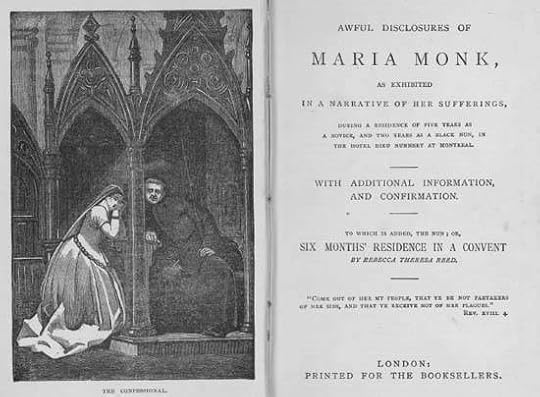 ALT
ALT
October 9, 2024
Halloween Countdown 2024, Day 9
Another dark and dreadful novel that women working in 19th-century mills in Lowell, Massachusetts reported enjoying was Alonzo and Melissa (aka The Asylum) by Isaac Mitchell (1804/1811).
Read here the later version attributed to Daniel Jackson, Jr.
Quote: The person in her room then uttered a horrible groan, and gliding along by her bed, took his stand behind the curtains, near the foot. The noises below, the cry of murder, the firing of the second pistol, and the running up stairs, were all corresponding scenes to impress terror on her imagination. The pretended ghost then advanced in front of her bed, while lights were slowly introduced, which first shone faintly, until they were ushered into the room by the private door, exhibiting the person before her in all his horrific appearances. On her shrieking, and shrinking into the bed, the lights were suddenly extinguished, and the person, after commanding her to be gone in a hoarse voice, passed again to the foot of the bed, shook it violently, and made a seeming attempt to get upon it, when, perceiving her to be springing up, he fled out of the room by the secret door, cautiously shut it, and joined his companions.
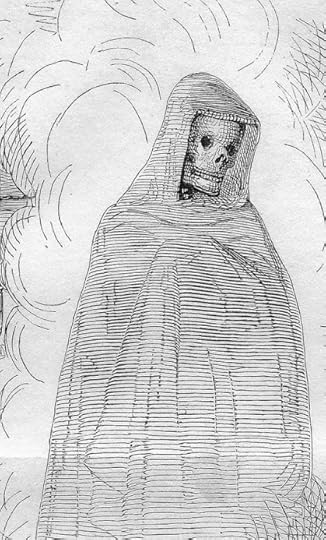 ALT
ALT
October 8, 2024
Halloween Countdown 2024, Day 8
Another Gothic novel that was a favorite with women working in 19th-century mills in Lowell, Massachusetts was The Three Spaniards (1801) by George Walker.
Quote: “That unhappy phantom will ever pursue Fernando, till he shall be pacified. He ever attends him invisible, and at this moment sits at the foot of the corpse of Almira.”
The Inquisitors and the prisoners shuddered, and turned their eyes towards the spot; but they could see nothing, except the pale body of the murdered maid.
“… I will command this unhappy spirit to become visible, and say what are his particular desires, and how he shall be tranquilized in the grave; then shall Fernando enjoy that uninterrupted repose he so well merits.”
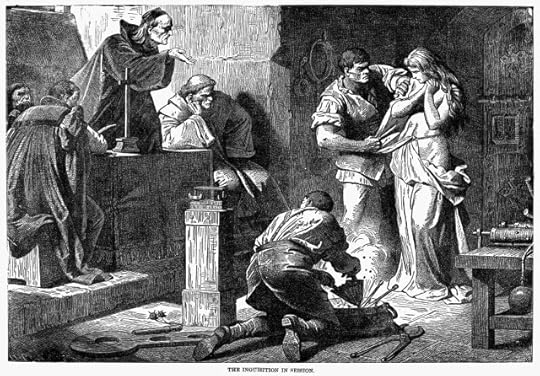 ALT
ALT
October 7, 2024
Halloween Countdown 2024, Day 7
Another Gothic title very popular with women working in 19th-century mills in Lowell, Massachusetts was The Children of the Abbey (1796) by Regina Maria Roche.
Quote: The horrors of my mind I cannot describe; I seemed to stand alone in the world, without one friendly hand to prevent my sinking into the grave, which contained the dearest objects of my love.
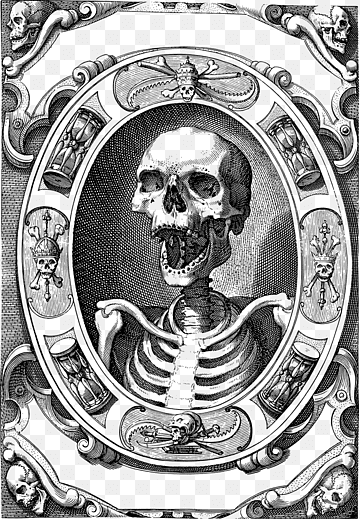 ALT
ALT
October 6, 2024
Halloween Countdown 2024, Day 6
A second Ann Radcliffe novel read and savored by women working in the 19th-century mills in Lowell, Massachusetts was The Mysteries of Udolpho (1994).
Quote: “… I am not so much afraid of faeries, as of ghosts, and they say there are a plentiful many of them about the castle; now I should be frightened to death, if I should chance to see any of them. But hush! ma’amselle, walk softly! I have thought, several times, something passed by me.”
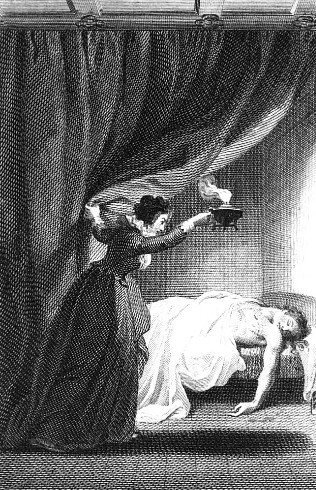 ALT
ALT
October 5, 2024
Halloween Countdown 2024, Day 5
Another title very popular with women working in 19th-century mills in Lowell, Massachusetts was The Romance of the Forest (1791) by the mother of the Gothic, Ann Radcliffe.
Quote: “She saw herself surrounded by the darkness and stillness of night, in a strange place, far distant from any friends, going she scarcely knew whither, under the guidance of strangers, and pursued, perhaps, by an inveterate enemy.”
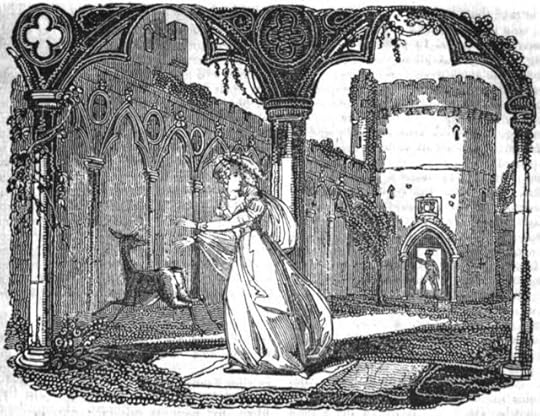 ALT
ALT



